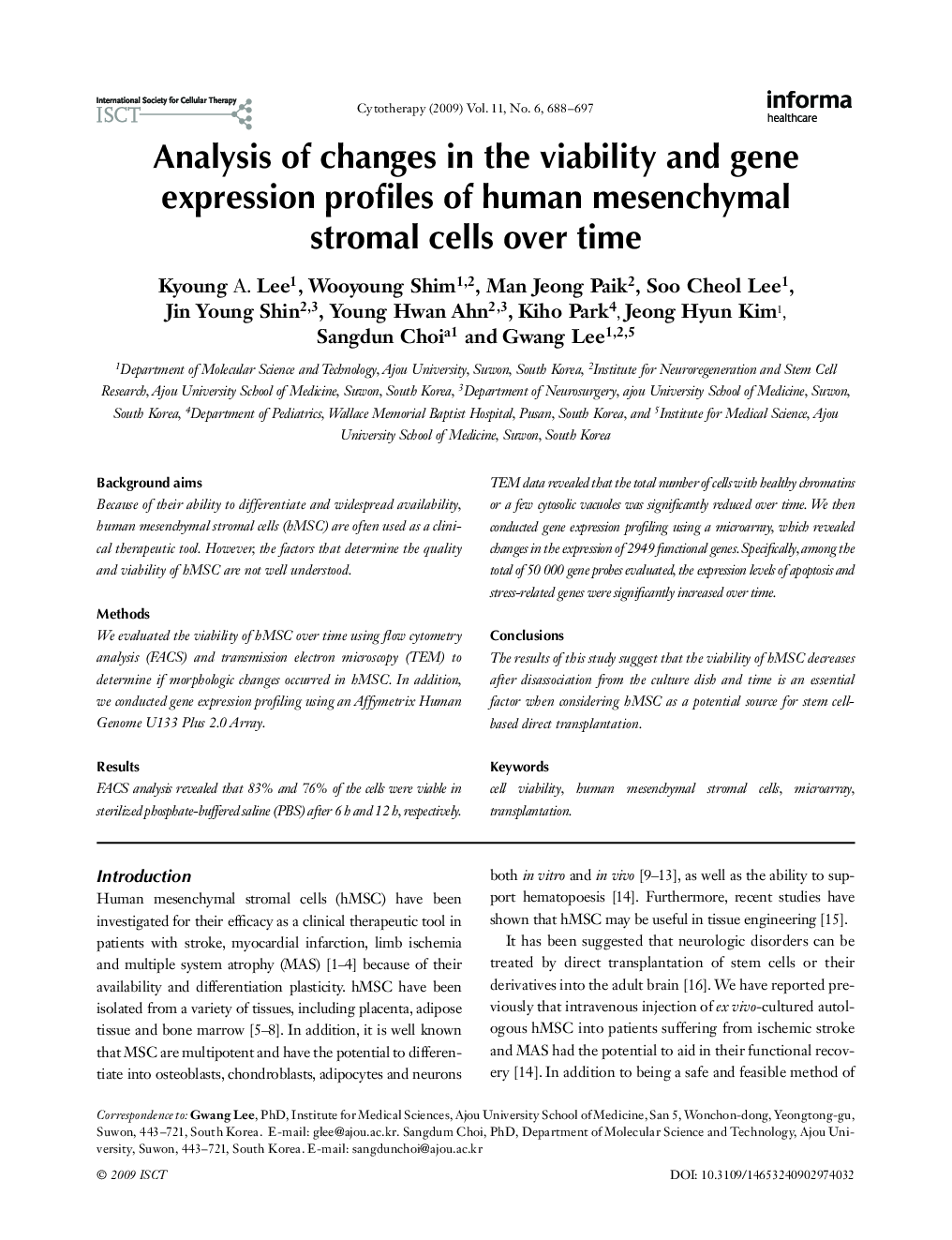| Article ID | Journal | Published Year | Pages | File Type |
|---|---|---|---|---|
| 2172138 | Cytotherapy | 2009 | 10 Pages |
Background aimsBecause of their ability to differentiate and widespread availability, human mesenchymal stromal cells (hMSC) are often used as a clinical therapeutic tool. However, the factors that determine the quality and viability of hMSC are not well understood.MethodsWe evaluated the viability of hMSC over time using flow cytometry analysis (FACS) and transmission electron microscopy (TEM) to determine if morphologic changes occurred in hMSC. In addition, we conducted gene expression prof ling using an Affymetrix Human Genome U133 Plus 2.0 Array.ResultsFACS analysis revealed that 83% and 76% of the cells were viable in sterilized phosphate-buffered saline (PBS) after 6 h and 12 h, respectively.TEM data revealed that the total number of cells with healthy chromatins or a few cytosolic vacuoles was significantly reduced over time. We then conducted gene expression prof ling using a microarray, which revealed changes in the expression of 2949 functional genes. Specifcally, among the total of 50 000 gene probes evaluated, the expression levels of apoptosis and stress-related genes were significantly increased over time.ConclusionsThe results of this study suggest that the viability of hMSC decreases after disassociation from the culture dish and time is an essential factor when considering hMSC as a potential source for stem cell-based direct transplantation.
